Why The Optimal Radiology Study Requires Patient-Centered Imaging
Patient expectations have changed. Rising healthcare costs are driving patients to demand more information when confronted with a medical issue, and...

Remote radiologist jobs with flexible schedules, equitable pay, and the most advanced reading platform. Discover teleradiology at vRad.

Radiologist well-being matters. Explore how vRad takes action to prevent burnout with expert-led, confidential support through our partnership with VITAL WorkLife. Helping radiologists thrive.

Visit the vRad Blog for radiologist experiences at vRad, career resources, and more.

vRad provides radiology residents and fellows free radiology education resources for ABR boards, noon lectures, and CME.

Teleradiology services leader since 2001. See how vRad AI is helping deliver faster, higher-quality care for 50,000+ critical patients each year.

Subspecialist care for the women in your community. 48-hour screenings. 1-hour diagnostics. Comprehensive compliance and inspection support.

vRad’s stroke protocol auto-assigns stroke cases to the top of all available radiologists’ worklists, with requirements to be read next.

vRad’s unique teleradiology workflow for trauma studies delivers consistently fast turnaround times—even during periods of high volume.

vRad’s Operations Center is the central hub that ensures imaging studies and communications are handled efficiently and swiftly.

vRad is delivering faster radiology turnaround times for 40,000+ critical patients annually, using four unique strategies, including AI.
.jpg?width=1024&height=576&name=vRad-High-Quality-Patient-Care-1024x576%20(1).jpg)
vRad is developing and using AI to improve radiology quality assurance and reduce medical malpractice risk.

Now you can power your practice with the same fully integrated technology and support ecosystem we use. The vRad Platform.

Since developing and launching our first model in 2015, vRad has been at the forefront of AI in radiology.

Since 2010, vRad Radiology Education has provided high-quality radiology CME. Open to all radiologists, these 15-minute online modules are a convenient way to stay up to date on practical radiology topics.

Join vRad’s annual spring CME conference featuring top speakers and practical radiology topics.

vRad provides radiology residents and fellows free radiology education resources for ABR boards, noon lectures, and CME.

Academically oriented radiologists love practicing at vRad too. Check out the research published by vRad radiologists and team members.

Learn how vRad revolutionized radiology and has been at the forefront of innovation since 2001.

%20(2).jpg?width=1008&height=755&name=Copy%20of%20Mega%20Nav%20Images%202025%20(1008%20x%20755%20px)%20(2).jpg)

Visit the vRad blog for radiologist experiences at vRad, career resources, and more.


Explore our practice’s reading platform, breast imaging program, AI, and more. Plus, hear from vRad radiologists about what it’s like to practice at vRad.

Ready to be part of something meaningful? Explore team member careers at vRad.
7 min read
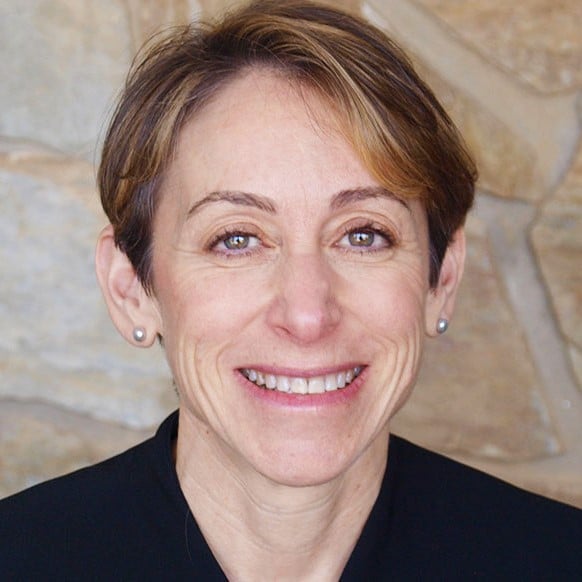 Jill Wruble, DO
:
July 3, 2022
Jill Wruble, DO
:
July 3, 2022
-2.png)
If you were to travel to the Kilimanjaro Christian Medical Center in Moshi, Tanzania, you would find yourself in the shadow of snowcapped, Mt. Kilimanjaro. At dawn, you would walk through dense vegetation on a rocky and rutted red dirt path to the guarded gate of the doctors’ compound and into a small, spare reading room inside a huge hospital complex known as KCMC. The compound includes a 630-bed public hospital with 1852 students and 1300 staff, a medical school, a research institute and allied health schools. The hospital treats 1000 patients daily. Some travel great distances. Many are terribly ill.

Some with diseases unfamiliar to you, and others with common diseases so advanced that their imaging manifestations are no longer familiar. By 7 a.m. you are sitting at a PACS alongside a second-year resident discussing these images…
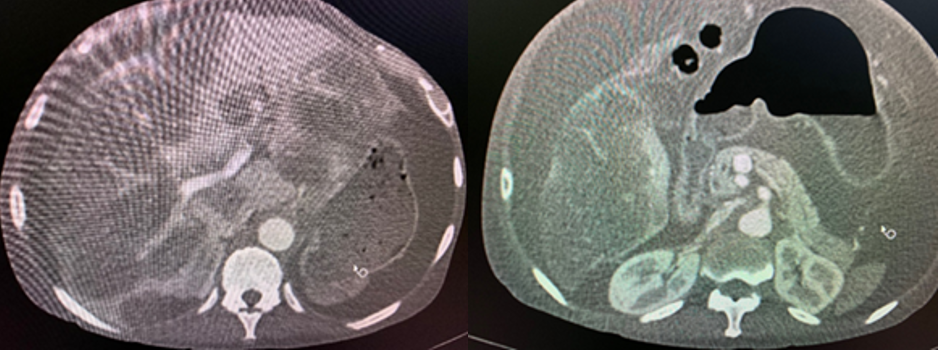
Undifferentiated adenoca from unknown primary?
Followed by these…
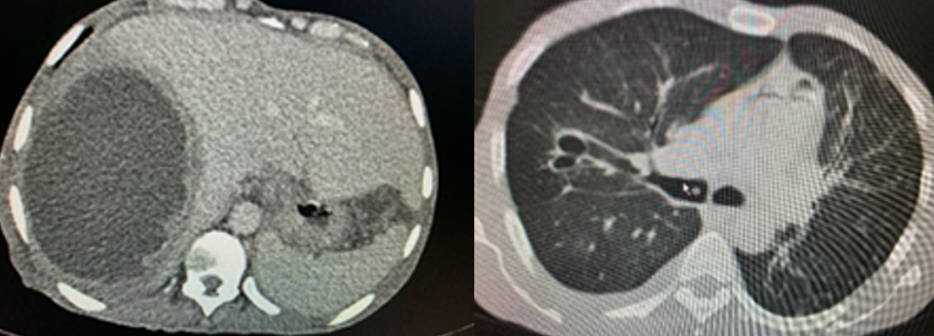
Invasive Klebsiella?
Up next…
-1.png)
Phacomatoses like NF1 or the rare schwannomatosis? Or leptomeningeal mets due to a hematologic malignancy?
...and many more similarly interesting and challenging studies throughout the day.
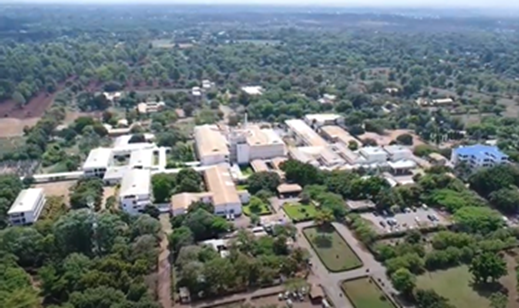
Tanzania is a place where teaching and working provides the opportunity to impact the professional trajectory of the residents, and the practice of medicine in east Africa, on a scale rare in the US.
My involvement began about a year ago when I happened to be sharing a reading room at Johns Hopkins with Ryan England, a young navy-pilot-turned-radiologist. Ryan was on the phone recruiting a neuroradiologist to teach the KCMC residency. It had lost accreditation and was poised to reconvene with a class of first year residents on the condition that overseas radiologists would supplement the program with daily lectures. I had recently retired from a hospital where I taught Yale radiology residents. I missed it. “Could you use a body imager?” I asked.
Within weeks, I was teaching KCMC’s eight bright and eager new first years, along with equally endearing residents from Zambia—both via Zoom. I was impressed by their fund of knowledge and insightful questions, but it was their uncommonly gracious thank you’s that stood apart and made me want to join the Tanzania team organized by RAD-AID International, a humanitarian organization whose mission is to improve health of under-resourced communities here and abroad by providing radiology services, training and education. In short order, I was working with Dr. Arlene Richardson, the RAD-AID Tanzania program director and a Rad Partners MSK radiologist in Chicago, to recruit lecturers and to moderate the morning conferences given by a remarkable cadre of academic and private practice radiologists scattered across the US and Canada. My involvement increased such that I now serve as associate program director for RAD-AID Tanzania.
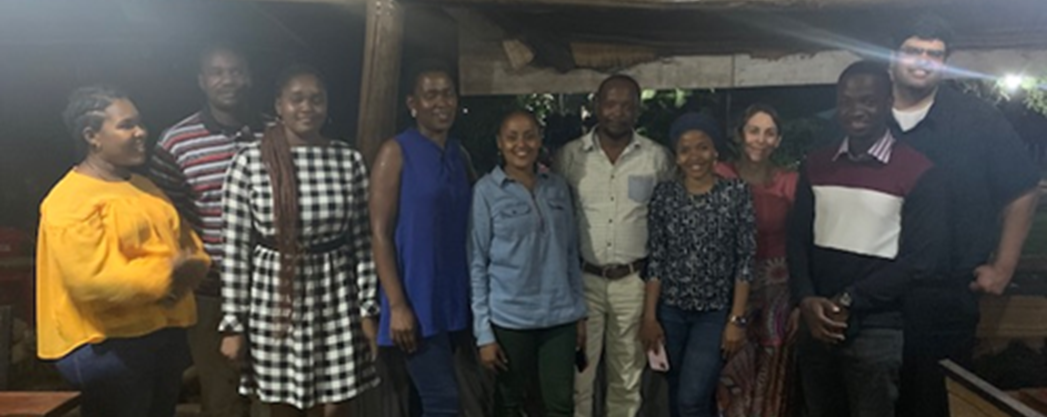
I wanted to get a deeper sense of the challenges of being a resident at KCMC, the community they serve, and the pathology they encounter. So, as COVID began to wane I accepted the invitation of KCMC’s Program Director, Dr. Adnan Sadiq, to spend several weeks on site. I booked a flight. I thought this would help me enrich the relationship and tailor the support RAD-AID was providing—as well as to answer questions posed by those who had volunteered to serve as our faculty.

The experience was eye-opening and extremely rewarding—a 12 out of 10. There were far more opportunities to contribute and learn at KCMC than I could explore during a single visit.
But I left believing that my objectives had been accomplished. I had contributed to the residents’ education, lightened Adnan’s demanding workload for a time, and personally learned a lot from the varied and challenging pathology. Ultimately, working alongside residents and getting a sense of their environment, opportunities, challenges, and personal obligations was profoundly fulfilling and has made it easier to teach and motivate from afar.
After 26 hours of travel, including an 8-hour layover in Doha, Qatar, I landed in Moshi on a Wednesday at 9 a.m. A couple was waiting with a sign that said “Welcome Dr. Wruble. They drove me the 45 minutes to Moshi, stopping along the way to negotiate the purchase of avocados, mangos and papayas from one of many roadside vendors.

KCMC is on a large campus with infrastructure to host visitors. There was a designated doctors’ compound which was spare but not spartan. I was the only one in a three-bedroom, two-bathroom, single-story house, surrounded by a garden and flowering trees that were populated by monkeys.
Electricity is expensive there, and pre-paid. Operating the water heater is especially expensive and quickly depletes the supply. To conserve, you turn on an electric water heater with the flick of a switch and wait about an hour for tepid water with which to shower. It’s best not to forget to flick the switch to off, lest you deplete the electricity, which means no lights, no internet or internet-based WhatsApp calls home, as I did.
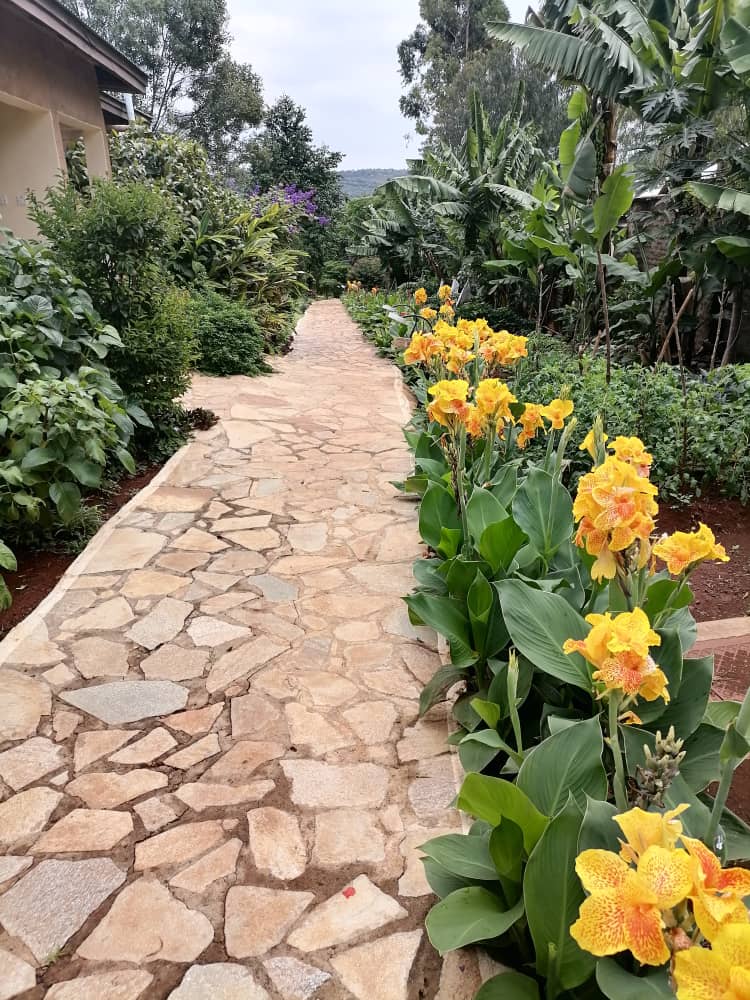

The Radiology Department Chief, Dr. Adnan Sadiq, is gracious, supportive, and easy to work with. As the sole interpreter of cross-sectional imaging, he is literally always on-call and appreciated the brief respite that I and other volunteers provide.
We quickly established a full but workable routine. Before 7:00 a.m. I began reading out the on-call residents. At eight, we paused readout, and I presented an interactive conference on body imaging. From nine until noon, I read out the CT’s and MRI’s with residents. At 1:00 p.m. I presented an interactive neuroradiology conference to residents as I visited during their “neuro block.” We broke at two for lunch, followed by a Zoom conference led by a US lecturer, ending before 5 p.m.
During unscheduled time I worked in Adnan’s office, reviewing interesting cases, fielding residents’ and clinicians’ questions and preparing the next day’s teaching. On several evenings I went to dinner with Adnan or some residents, and ex-pat physicians who had made the improvement of healthcare for Tanzanians their life’s work. One case involved a physician selling his home and other assets in Ireland to finance these efforts. These physicians were most impressive. I met expat neurologists Dr. William Howlett and Dr. Marieke Dekker when they came to review difficult cases. Their combined 50 years of experience treating climbers who became ill on Kilimanjaro are captured in a recent publication “Mountain Neurology,” and a presentation at the local international high school (with 400+ student of 77 nationalities), to which I was invited. The largest free-standing mountain in the world, Kilimanjaro is challenging. At 20,000 feet, the air is thin and climbers risk mountain sickness, pulmonary and cerebral edema. Because it is not a “technical” climb, however, it attracts people who would not attempt other mountains.
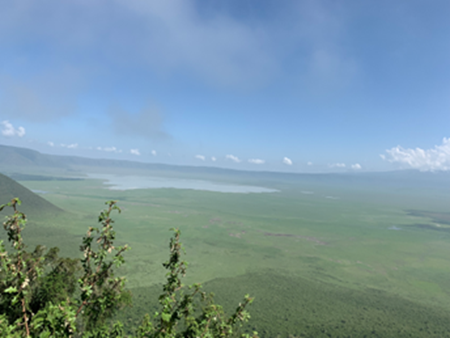
One weekend, I travelled to the extraordinary Ngorongoro volcanic crater, a UNESCO heritage site, where an estimated twenty-five thousand animals live and roam. There, the locally owned Pamoja Lodge provided farm-to-table dining and serve coffee that is grown, harvested and roasted on the premises. Rooms and dining tables are adorned with the petals of indigenous fuchsia flowers. Maasai warriors leap and sing to welcome arriving guests. An unexpected visit from a baboon occurred when a parking lot fender bender required briefly opening our car window. Instantly, a large baboon leapt through and settled beside me but thankfully left without attempting further familiarity.
On the 4-5 hour drive from Moshi, we visited Tanzania’s only rabbi, in Arusha, whose ancestors came from Zanzibar by way of Yemen and Ethiopia to procure and trade animal horns that could be made into a ritual instrument, a shofar. The rabbi, his wife and children live on an unmarked gated property in a home beside a synagogue with holy texts donated by a Canadian congregation. This community burgeoned to 5000 largely European Jews during WWII, but as political and financial opportunities changed, it waned to 300 nationwide. A well-traveled friend told me not to leave without a stop in Zanzibar, an island off the coast and short flight from Dar es Salaam. This is important advice that I pass along to any of you who might visit. There, Matemwe Lodge overlooks a shallow coral fringed lagoon on the quiet northeast coast. It is breathtaking. I also stopped at a spice plantation co-op where I bought spices for friends and family and visited historic Stone Town, including the Old Slave Market and the Freddie Mercy Museum.
A well-traveled friend told me not to leave without a stop in Zanzibar, an island off the coast and short flight from Dar es Salaam. This is important advice that I pass along to any of you who might visit. There, Matemwe Lodge overlooks a shallow coral fringed lagoon on the quiet northeast coast. It is breathtaking. I also stopped at a spice plantation co-op where I bought spices for friends and family and visited historic Stone Town, including the Old Slave Market and the Freddie Mercy Museum.
In every respect, the trip was most rewarding. I gained tremendous respect and affection for the residents and a greater understanding of the opportunities and challenges of training at KCMC, which I will use to tailor my teaching. I tried to share my excitement about radiology, its challenge and breadth, the pivotal role it plays in patient care, and the opportunity it provides to make a difference in so many lives.
Radiology is relatively new to Tanzania. The program at KCMC was developed by Dr. Helmut Diefenthal, a German-American WWII survivor, and his wife, a radiographer. They worked tirelessly in Tanzania between 1988 and 2014 as self-supported missionaries of the Lutheran church with the ambitious goal of expanding and improving radiological services in Tanzania. They returned to the US when Dr. Diefenthal was 90 in 2014, and in 2019 he died at age of 95.
The radiology residency and other KCMC residencies were de-credentialed within the last few years, apparently because of insufficient faculty support and didactic instruction. The program began anew in the spring of 2021, with the support of RAD-AID and volunteer lecturers from the US and Canada who have provided exceptional one-hour conferences each day.
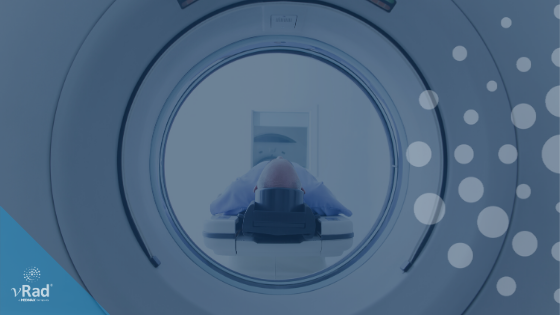
Patient expectations have changed. Rising healthcare costs are driving patients to demand more information when confronted with a medical issue, and...
.png)
I’ll be honest, I had no plans to go into teleradiology straight from residency. However, I fell into it because economic conditions meant choices...
.png)
Originally published by Michael Walter on Radiology Business The Portland Clinic (TPC), a physician-owned, multi-specialty group...
vRad (Virtual Radiologic) is a national radiology practice combining clinical excellence with cutting-edge technology development. Each year, we bring exceptional radiology care to millions of patients and empower healthcare providers with technology-driven solutions.
Non-Clinical Inquiries (Total Free):
800.737.0610
Outside U.S.:
011.1.952.595.1111
3600 Minnesota Drive, Suite 800
Edina, MN 55435